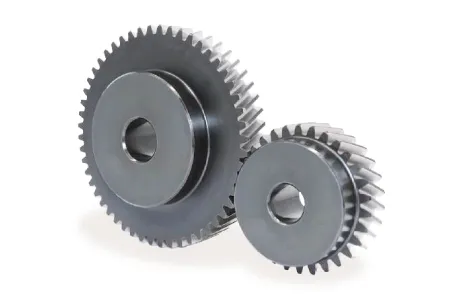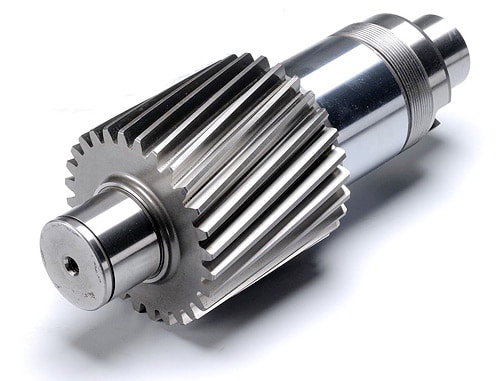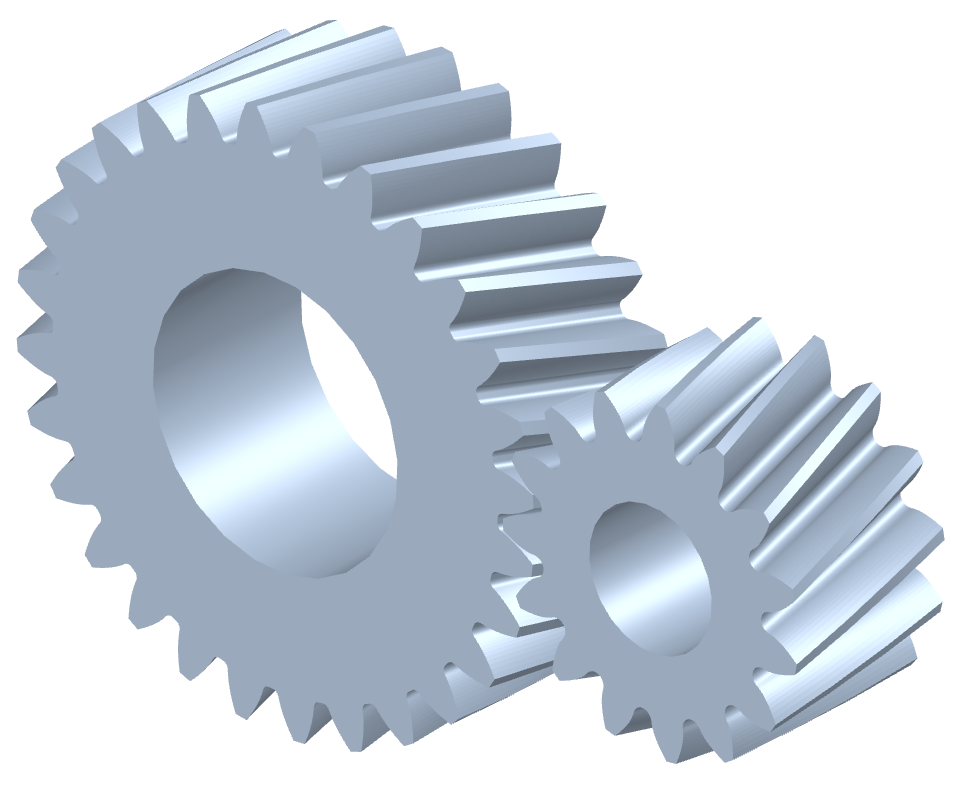Product Description
Product Description
E series gear motor is combined with helical gear and worm gear. It is 90° for the input and output shaft.
Mounting position: footed mounting, flange mounting, and shaft mounting, etc.
Technical data:
Output speed:0.12~397rpm
Rated output torque:10~4200N*m
Motor power: 0.12~22KW
Product Show
Product Specification
| Product Features | |||||||
| 1. Economical operation, low noise, and high permitted overhung loads. | |||||||
| 2. Due to their outstanding efficiency, these drives can be used in every industrial sector and tailored to individual torque and speed requirements. | |||||||
| General Technical data | |||||||
| Housing material | HT250 high-strength cast iron | ||||||
| Housing hardness | HBS190-240 | ||||||
| Pinion material | 20CrMnTiH | ||||||
| Gear material | 20CrMnTiH | ||||||
| Surface hardness of gears | HRC58°~62 ° | ||||||
| Gear core hardness | HRC33~40 | ||||||
| Input /output shaft material | 40CrMnTiH | ||||||
| Input / Output shaft hardness | HRC25~30 | ||||||
| Machining precision of gears | accurate grinding, 6~7 Grade | ||||||
| Lubricating oil | GB L-CKC220 | ||||||
| Heat treatment | tempering, cementing, quenching, etc. | ||||||
| Efficiency | 94%~96% (depends on the transmission stage) | ||||||
| Noise (MAX) | 60~68dB | ||||||
| Temp. rise (MAX) | 40°C | ||||||
| Temp. rise (Oil)(MAX) | 50°C | ||||||
| Vibration | ≤20µm | ||||||
| Backlash | ≤20Arcmin | ||||||
| Brand of bearings | China Top brand C&U, LYC, TMB or other brands requested, S K F….. | ||||||
| Brand of oil seal | CTY— ZheJiang or other brands requested | ||||||
| E —- series helical-worm gear motor | |||||||
| E-series single stages | |||||||
| Model | Output Shaft Dia. | Center Height | Output Flange Dia. | Power | Ratio | Permitted Torque | Output Speed |
| Solid (mm) | (mm) | (mm) | (kW) | (Nm) | (RPM) | ||
| E37 | 20k6 | 80j6 | 80/120 | 0.12~1.5 | 6.72~160 | 105 | 8.4~397 |
| E47 | 25k6 | 100j6 | 110/160 | 0.12~1.5 | 7.5~212 | 190 | 6.6~192 |
| E57 | 30k6 | 112j6 | 130/200 | 0.18~3.0 | 7.5~212 | 340 | 6.5~194 |
| E67 | 35k6 | 140j6 | 130/200 | 0.25~5.5 | 7.45~215 | 565 | 6~189 |
| E77 | 45k6 | 180j6 | 180/250 | 0.37~7.5 | 7.9~257 | 1200 | 3.5~177 |
| E87 | 60m6 | 225h6 | 250/350 | 0.55~15 | 8.52~277 | 2600 | 1.0~171 |
| E97 | 70m6 | 280h6 | 350/450 | 1.5~22 | 8.26~282 | 4185 | 4.9~177 |
| E- series double stages | |||||||
| Model | Output Shaft Dia. | Center Height | Output Flange Dia. | Power | Ratio | Permitted Torque | Output Speed |
| Solid (mm) | (mm) | (mm) | (kW) | (Nm) | (RPM) | ||
| E37D17 | 20k6 | 80j13 | 80/120 | 0.12 | 110~202 | 89 | 6.8~13 |
| E47D17 | 25k6 | 100j13 | 110/160 | 0.12~0.18 | 180~438 | 255 | 3.2~7.4 |
| E57D17 | 30k6 | 112j13 | 130/200 | 0.12~0.25 | 131~655 | 311 | 2.1~9.9 |
| E67D37 | 35k6 | 140j13 | 130/200 | 0.12~0.37 | 246~1363 | 600 | 1.0~5.6 |
| E77D37 | 45k6 | 180j13 | 180/250 | 0.12~1.1 | 219~3540 | 1230 | 0.39~6.4 |
| E87D57 | 60m6 | 225h13 | 250/350 | 0.12~1.5 | 205~7643 | 2810 | 0.18~6.9 |
| E97D57 | 70m6 | 280h13 | 350/450 | 0.12~3.0 | 179~11267 | 4420 | 0.12~7.7 |
| Remarks: please refer to our catalog or ask for a salesman when your technical requirements are special. | |||||||
Package
Plastic bag + wooden carton
Company Profiles
-We are a leading gear motor manufacturer
ZHangZhoug Xihu (West Lake) Dis.hai Reducer is a leading manufacturer of gear motors and gearboxes.
Since 1991, we have specialized in manufacturing a wide range of gear motors and gearboxes including:
- helical gear motor
- helical bevel gear motor
- parallel shaft helical gear motor
- helical worm gear motor
- hoist drive
- heavy-duty helical gearbox
- heavy-duty helical bevel gearbox
- gear motor for the car parking system
- spiral bevel gearbox
Certificate
FAQ
Q: Can you print other colors?
Yes. Customized colors can be printed on the gear motor according to your requirements.
Q: Is that the factory price?
Yes. We assure you all prices are based on the factory.
Q: What is the lifespan? what is the guarantee
The lifespan of a gear motor can reach 5-20 years depending on different working conditions. The guarantee time is 1 year after delivery.
Q: What documents are available?
A full range of documents including structural drawings, packing list, installation manual, and relative certificates can be provided. Moreover, customs declaration is provided. We provide a one-stop service for you.
Q: Is it able to customize?
yes, we could re-design and produce the gear motor for your request if the total or plHangZhou quantity is enough.
| Application: | Motor, Machinery, Marine, Toy, Agricultural Machinery |
|---|---|
| Function: | Change Drive Torque, Change Drive Direction, Speed Changing, Speed Reduction |
| Layout: | Coaxial |
| Hardness: | Hardened Tooth Surface |
| Installation: | Horizontal Type |
| Step: | Three-Step |

Can you provide examples of machinery that use helical gears?
Helical gears are widely used in various types of machinery and mechanical systems. Their unique tooth geometry and smooth operation make them suitable for applications that require high torque transmission, precision, and low noise levels. Here are some examples of machinery and equipment that commonly utilize helical gears:
- Industrial Gearboxes: Helical gears are extensively employed in industrial gearboxes used in various industries such as manufacturing, mining, oil and gas, and power generation. These gearboxes are responsible for transmitting power and adjusting rotational speed in large machinery and equipment, including conveyors, mixers, crushers, extruders, and heavy-duty pumps.
- Automotive Transmissions: Helical gears play a crucial role in automotive transmissions, both manual and automatic. They facilitate the smooth shifting of gears and the transfer of power from the engine to the wheels. Helical gears are commonly found in the main transmission system, differential gears, and gear sets used in the gearbox.
- Machine Tools: Many types of machine tools, such as milling machines, lathes, and grinding machines, rely on helical gears for precise motion control and power transmission. Helical gears are used in the spindle drives, feed mechanisms, and gearboxes of these machines, enabling accurate and efficient metal shaping, cutting, and finishing operations.
- Rotary Compressors: Helical gears are employed in rotary compressors, which are widely used in industries such as refrigeration, HVAC, and pneumatic systems. The helical gears in these compressors help to compress and transfer gases or fluids, generating the desired pressure and flow rates.
- Printing Presses: High-speed printing presses utilize helical gears in their drive systems. The gears enable the precise synchronization of various components, such as rollers, cylinders, and plate cylinders, ensuring accurate paper feeding, ink distribution, and image transfer during the printing process.
- Paper and Pulp Industry: Helical gears are utilized in machinery used in the paper and pulp industry, including paper mills and paperboard manufacturing plants. They are employed in equipment such as pulpers, refiners, stock pumps, and paper machine drives, facilitating the processing, refining, and transportation of pulp and paper materials.
- Construction Equipment: Helical gears are found in various construction machinery, such as cranes, excavators, loaders, and bulldozers. They are used in the drivetrains, swing mechanisms, and hydraulic systems of these machines, providing the necessary torque, speed control, and power transmission capabilities.
- Marine Propulsion Systems: Helical gears are utilized in marine propulsion systems, including marine engines, outboard motors, and ship propulsion systems. They enable efficient power transmission from the engine to the propeller, ensuring smooth and reliable operation of watercraft.
- Wind Turbines: In wind energy applications, helical gears are commonly used in wind turbine gearboxes. They help convert the low-speed rotation of the turbine blades into higher rotational speeds required by the electrical generators, enabling efficient energy generation from wind power.
- Food Processing Machinery: Helical gears find applications in the food processing industry, where they are used in equipment such as mixers, conveyors, extruders, and packaging machines. They facilitate the movement of ingredients, blending, and precise control of processing parameters.
These examples demonstrate the versatility and widespread use of helical gears across various industries and applications. The unique characteristics of helical gears make them suitable for a wide range of machinery that requires smooth, efficient, and reliable power transmission.

Can helical gears be used in both horizontal and vertical orientations?
Yes, helical gears can be used in both horizontal and vertical orientations. The design and characteristics of helical gears make them versatile and suitable for various orientations and applications. Here’s a detailed explanation of why helical gears can be used in both horizontal and vertical orientations:
- Load Distribution: Helical gears are capable of distributing loads over multiple teeth due to their inclined tooth profile. This design feature allows for efficient load sharing and helps minimize localized stresses on individual teeth. Regardless of whether the gears are in a horizontal or vertical orientation, the load distribution capability of helical gears remains effective, ensuring reliable and durable performance.
- Lubrication: Proper lubrication is crucial for the smooth operation of gears, regardless of their orientation. Helical gears can be adequately lubricated in both horizontal and vertical orientations to minimize friction, wear, and heat generation. The lubricant forms a film between the gear teeth, reducing contact stresses and facilitating efficient power transmission.
- Bearing Support: In both horizontal and vertical orientations, helical gears can be supported by suitable bearings to maintain proper alignment and reduce axial and radial loads. The bearing arrangement is designed to accommodate the specific orientation and loads encountered, ensuring stable and precise gear meshing.
- Alignment and Mounting: Proper alignment and mounting are essential for helical gears, regardless of their orientation. In horizontal orientations, gears can be mounted on shafts using suitable keyways, splines, or other fastening methods. In vertical orientations, additional considerations may be necessary to secure the gears and prevent axial movement. Ensuring accurate alignment during installation helps maintain optimal gear meshing and reduces noise, vibrations, and premature wear.
- Oil Splash Lubrication in Vertical Orientation: In vertical orientations, helical gears can benefit from oil splash lubrication. By strategically positioning oil reservoirs and splash guards, the gears can be effectively lubricated as the rotating gears agitate the lubricant, causing it to splash and reach all necessary surfaces. This method helps ensure adequate lubrication even in vertical orientations where gravity affects the flow of lubricant.
- Additional Considerations for Vertical Orientation: While helical gears can be used in vertical orientations, it’s important to consider additional factors that may come into play. In vertical applications, the weight of the gears and potential thrust forces need to be appropriately supported to prevent excessive axial loading or gear displacement. Proper housing design, bearing selection, and lubrication considerations should account for these factors to ensure reliable operation.
In summary, helical gears are versatile and can be used in both horizontal and vertical orientations. Their load distribution capabilities, ability to be properly lubricated, suitable bearing support, and the importance of alignment and mounting make them suitable for various applications and orientations. By considering specific factors related to the orientation, engineers can ensure the reliable and efficient performance of helical gears in both horizontal and vertical arrangements.

What is a helical gear and how does it work?
A helical gear is a type of cylindrical gear with teeth that are cut at an angle to the gear axis. It is widely used in various mechanical systems to transmit power and motion between parallel shafts. Here’s a detailed explanation of helical gears and their working principles:
A helical gear consists of a cylindrical shape with teeth that are cut in a helical pattern around the gear’s circumference. The teeth of a helical gear are not perpendicular to the gear axis but are instead aligned at an angle, forming a helix shape. This helix angle allows for gradual engagement and disengagement of the gear teeth, resulting in smoother and quieter operation compared to spur gears.
The working principle of a helical gear involves the transfer of rotational motion and power between parallel shafts. When two helical gears mesh together, their helical teeth gradually come into contact, causing a sliding action as the gears rotate. This sliding action creates both axial and radial forces on the teeth, resulting in a thrust load along the gear axis.
As the helical gears rotate, the sliding action between the teeth causes a force component along the gear axis. This axial force is responsible for generating the thrust load on the gear, which must be properly supported by suitable thrust bearings or other means to ensure smooth and efficient operation.
The helical gear design offers several advantages:
- Smooth and Quiet Operation: The helical teeth engagement allows for a gradual contact between the gear teeth, reducing impact and noise during operation. This results in smoother and quieter gear performance compared to spur gears.
- Increased Load-Carrying Capacity: The helical gear design provides greater tooth contact compared to spur gears. This increased contact area allows helical gears to transmit higher loads and handle greater torque without experiencing excessive wear or tooth failure.
- Parallel Shaft Operation: Helical gears are primarily used for transmitting power and motion between parallel shafts. By meshing two helical gears on parallel shafts, rotational motion can be efficiently transmitted from one shaft to the other with a constant speed ratio.
- Ability to Transmit Motion at Various Angles: While helical gears are commonly used for parallel shaft applications, they can also be used to transmit motion at non-parallel shaft angles by using a combination of helical gears or by incorporating additional components such as bevel gears.
It is important to consider a few factors when using helical gears:
- Helix Angle: The helix angle determines the degree of tooth engagement and sliding action. A higher helix angle increases the smoothness of operation but also introduces a larger axial force and thrust load on the gear.
- Direction of Helix: Helical gears can have either a right-hand or left-hand helix. When two helical gears mesh, they must have opposite helix directions to ensure proper engagement.
- Lubrication: Due to the sliding action between helical gear teeth, proper lubrication is crucial to minimize friction, wear, and heat generation. Adequate lubrication helps ensure the longevity and efficiency of the gear system.
In summary, a helical gear is a cylindrical gear with teeth cut in a helical pattern. It operates by gradually engaging and disengaging the teeth, resulting in smooth and quiet operation. Helical gears are widely used in various mechanical systems for parallel shaft applications, providing high load-carrying capacity and efficient power transmission.


editor by CX 2023-09-12